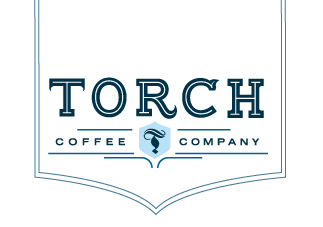Preface: What roast bean control system can most effectively serve the roasting?
In line with the continued development of artisanal coffee and its culture, people no longer drink coffee simply to receive a jolt of energy. Coffee has become a way of life and more people are choosing to purchase freshly roasted beans to brew themselves.
When the raw green beans are roasted into their coffee color, a process that involves over 600 aromatic compounds from rich and high-quality flavors brings the senses great enjoyment. The quality of coffee is becoming more and more important, thus implying more rigorous quality control for roasters.
In the last article, we visited and shared the experiences of bean roasting in roasteries both domestic and foreign.
Based on these valuable experiences, today we would like to discuss how to build a quality control system for roasting beans.
What quality control system for roasting beans can most effectively serve the roasting?
Answering this requires that we clearly know which factors affect the quality of the roast in order to establish a reasonable and objective quality control system.
Physical Conditions of Raw Beans
We all know that sixty-percent of a good cup of coffee relies on the quality of the raw beans. It is therefore necessary to test the physical conditions of raw beans and whether or not they meet the company’s standards, including volume of water, density, and defect rate.
The testing of the physical conditions of raw beans can be divided into two stages: sample testing before selection and purchase and monthly inspection after purchase.
Procurement Gradation Log for Torch Coffee Labs
When raw beans are ten- to twelve-percent dried, its germs remain in a dormant state. Raw beans will be affected by the moisture content and the heat of their environment. If storage conditions are inadequate, raw beans will age quickly or absorb other smells, resulting in loss of flavor or peculiar aromas.
It is thus critically important to make regular spot-checks.
The Testing of Roasting Conditions
When the conditions of raw beans are good, roasting determines the fate of the coffee.
Effectively testing the results of the roast is extremely important. I will introduce several methods summarized in past works to everyone:
1. Roast Profile and Color Value
The roastery often sets the roast profile, but unpredictable weather, the amount of beans, and even the order of the roast all can affect the final product.
One must maintain the same roast conditions as much as possible with the most optimal roast profile (of course, this is difficult for most roasteries to do therefore one must rely on the experience of roasters to implement fine-tuning).
Yunnan Natural Roasting Profile
The color shade reflects the depth of the roast in the finished beans. It is directly related to the produced flavor. It could be said that roast color value is one of the easier detection methods to quantify. Generally, the disparity between what is allowable and the preset color value is roughly five units.
If the roast profile and color values are within reasonable ranges, there is essentially no problem. This is a good method for roasteries that need to comply with same-day shipping.
2. Cuping Test
The cuping test is both the most direct and also subjective detection method.
In order for the cup test to accurately reflect the quality of the finished beans, it must adhere to the following requirements as much as possible:
Cup test personnel must conduct periodic calibration, in order to ensure the importance of perceptive consistency;
In addition to roasters, others should participate in the cup test. It is easy for roasters to become influenced by their roasting ideas. During the cup test, there are both ”good and bad” expectations;
It is best to not perform the cup test on the same day as the roast, because the roast aroma and its further developments can affect judgment.
It is also a good method to quantify the concentration of fluid coffee while conducting the cuping test through using concentration testing equipment.
If the TDS measures around 1.05, the cup extraction ranges between eighteen- to nineteen-percent, indicating favorable roasting conditions. The TDS is too low, the roast may be underdeveloped.
3. Customer Experience
Coffee practitioners are accustomed to using the cup test to quickly test the quality of the coffee in one concentrated burst but often forget that customers do not drink coffee like this in their daily life.
It is thus also useful to test coffee in a way that mirrors how customers brew their coffee as well as testing changes in the coffee flavor at later stages of development to adhere as closely as possible to the taste buds of the customers.
After collecting feedback from their market, coffee practitioners should implement corresponding adjustments. Our ultimate goal for quality control is to allow customers to drink an enjoyable cup of coffee.
In addition to controlling the roasting process, many other aspects are involved in allowing customers to purchase satisfactory coffee beans.
A reasonable quality control system for roasting beans should be built in accordance with each company’s situation while also striving to offer a consumer‘s utmost experience that will not disappoint!













